Several months ago, I was having a conversation with a small group of colleagues about stewarding our lives well as secondary educators. One member of the group was Laura Gersch, who teaches in the Boston area. Laura asked a question that stayed with me for a while.
What's the work within the Inputs-Outputs sweet spot?
If you put inputs on the y-axis and outputs on the x, Laura asked — what's in the sweet spot of low input and high output? It was a super smart way of framing a question I come to constantly in my writing and in my classroom. It's another way of saying, “What's the work that matters most?”
Let me make it a bit clearer with some visuals.
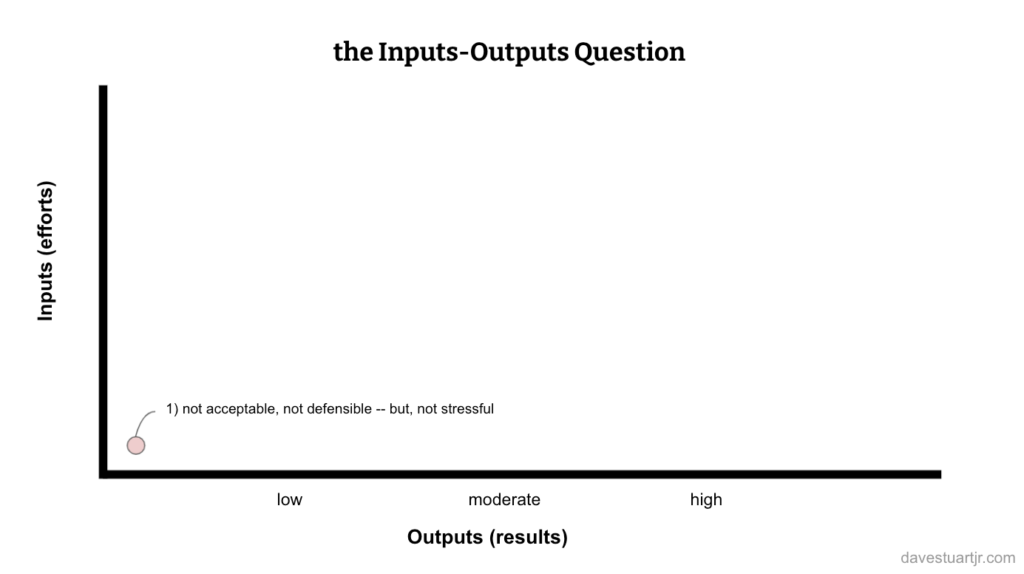
But, if you're the kind of person that reads articles like this, you didn't need me to tell you any of that.
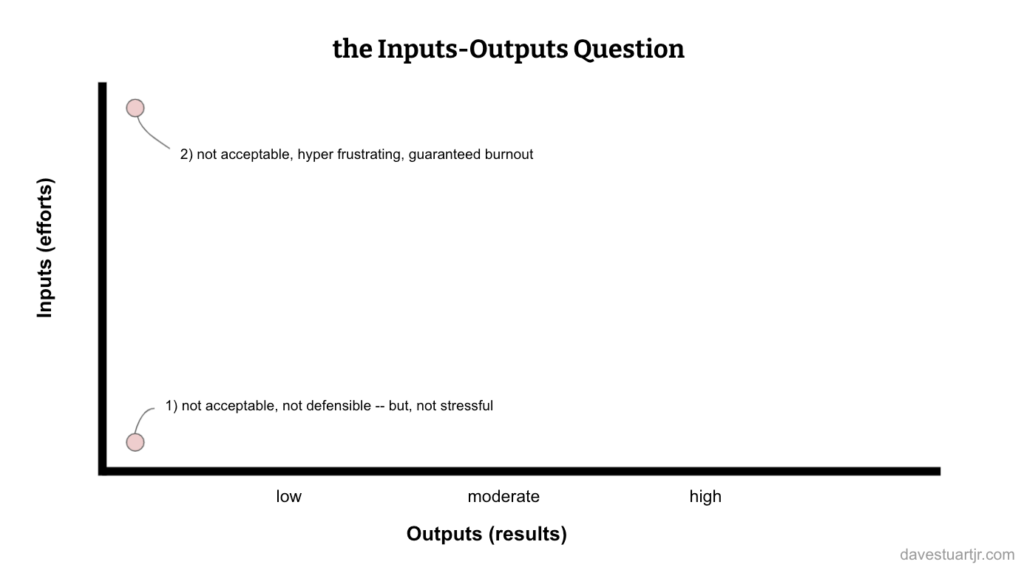
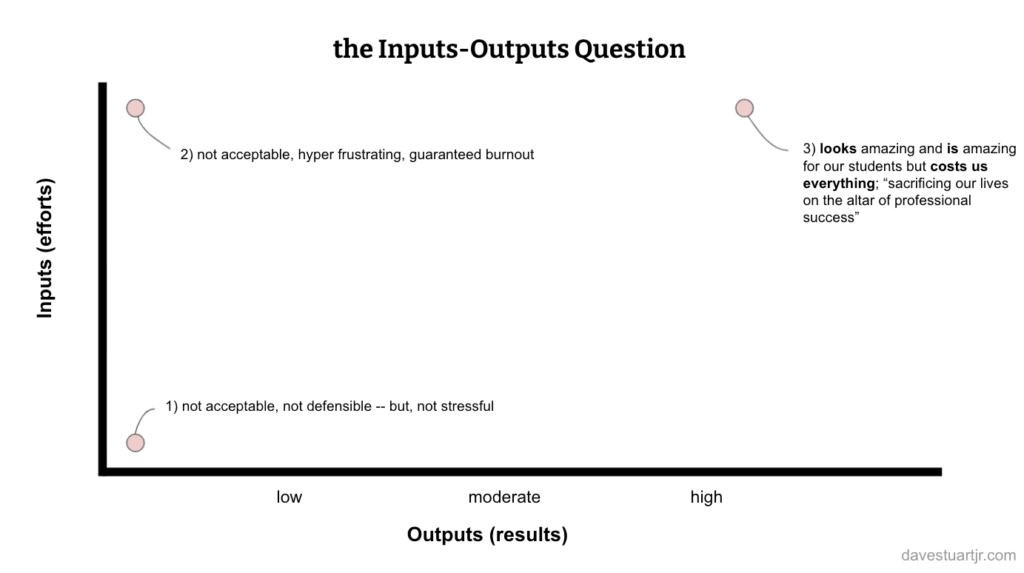
But what if there were ways to produce more learning with less stress?
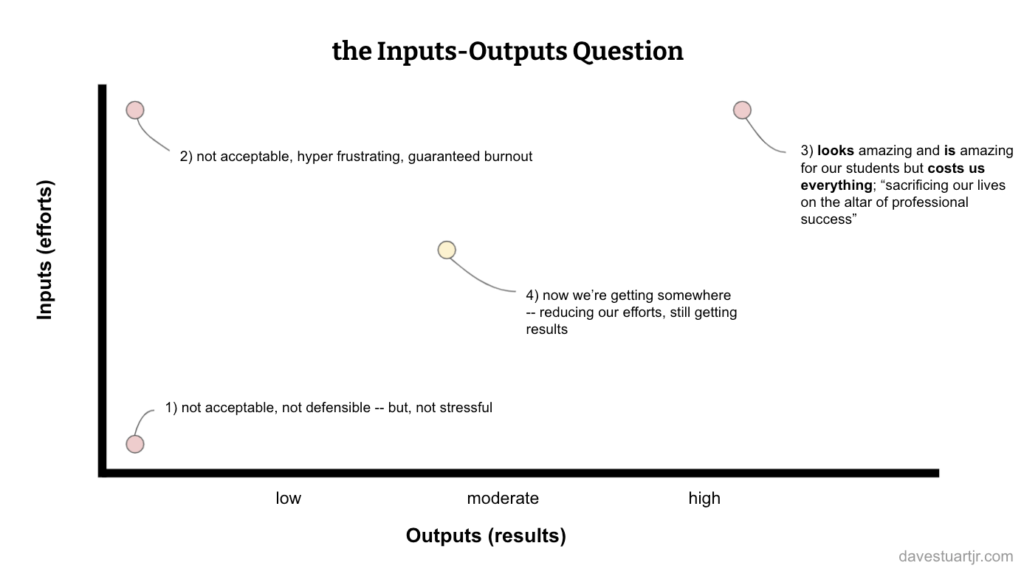
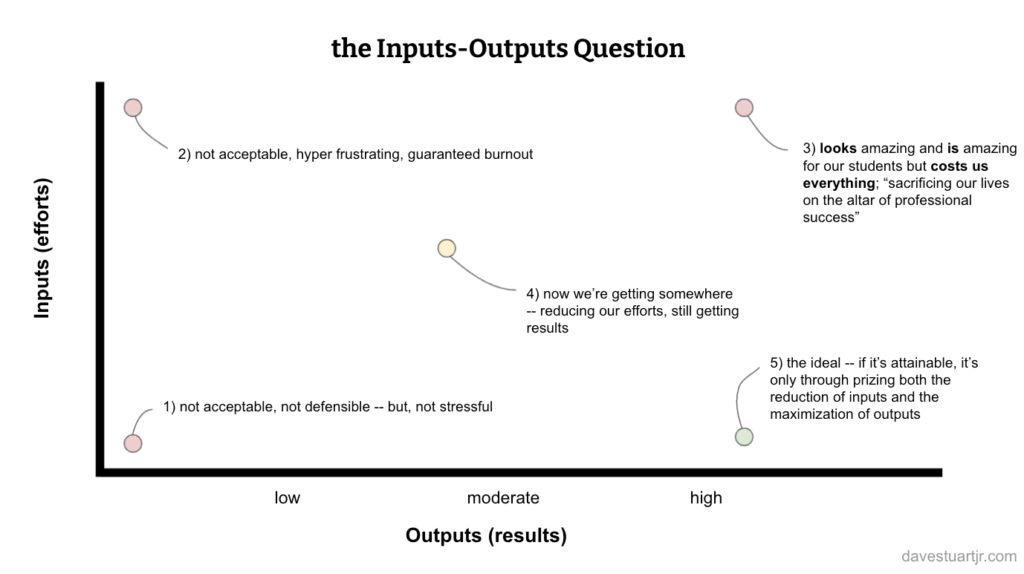
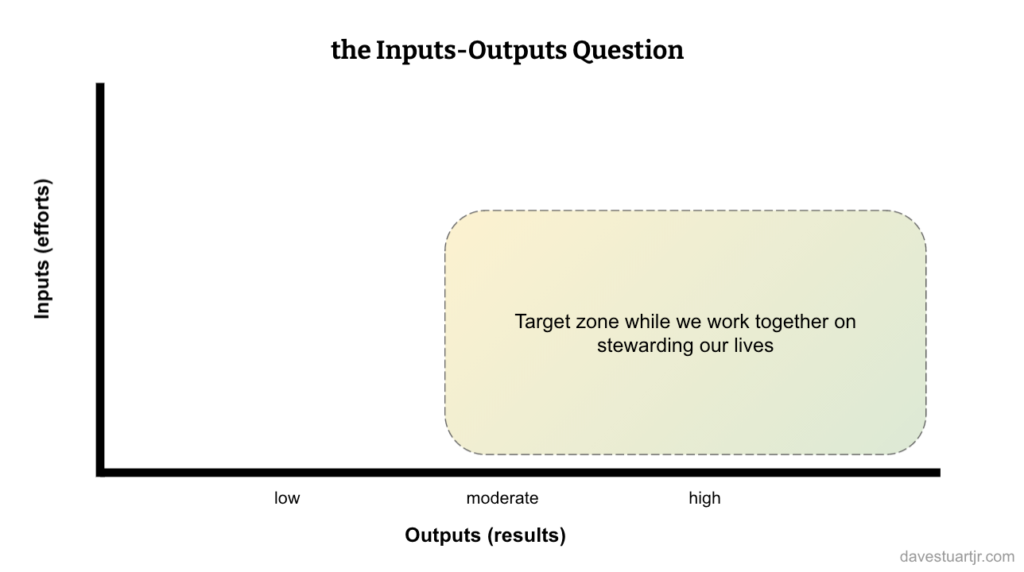
Cool, right?
So Dave, what's this got to do with where the blog is going in early 2022?
I mean… weird question to ask. But timely. Thank you.
In the next couple of months, I'm going to head back to the topic that I speak to teacher groups about the most these days: student motivation via the five key beliefs. When I was speaking with a high school faculty group at Walton High School earlier this week, I closed our time by saying, “I can't think of anything in my career that has given me more bang for my buck” — in the language of today's blog post, more output for my input — than becoming strong at instructional practices that are highly conducive to 5KB cultivation.
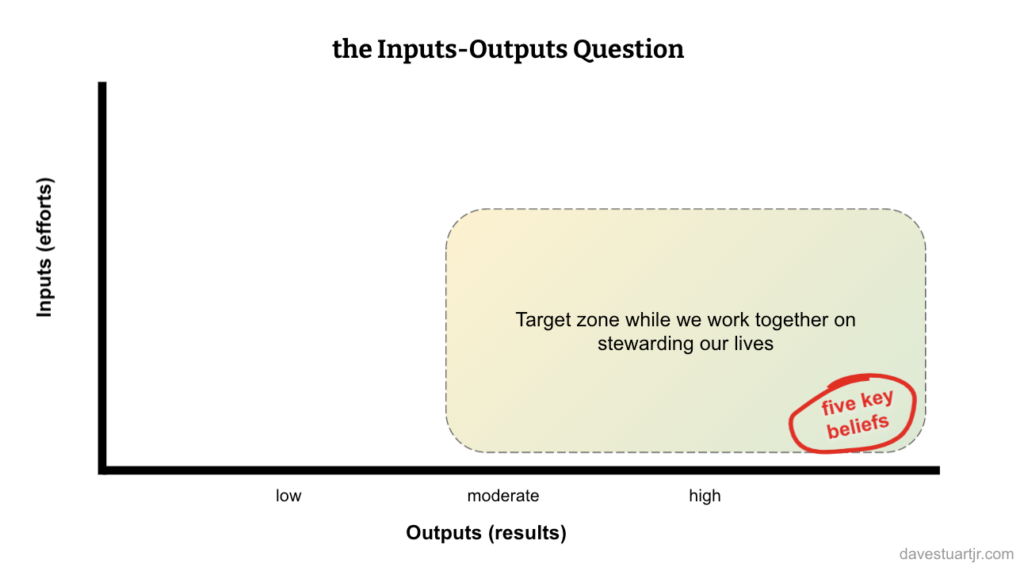
So, stay tuned. Tell a friend about the newsletter. Lots of fun things that I want to write for you these next two months.
Best to you and yours,
DSJR
Leave a Reply